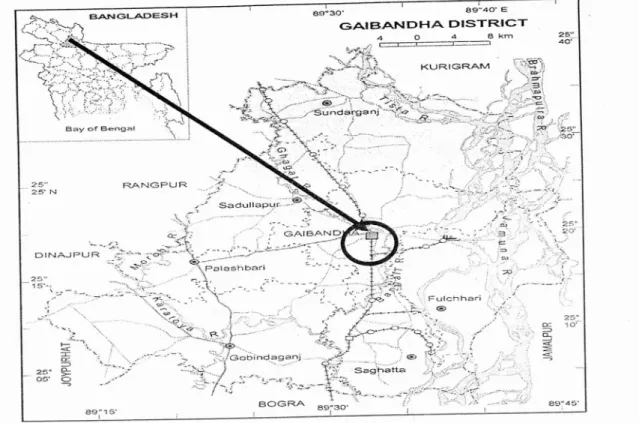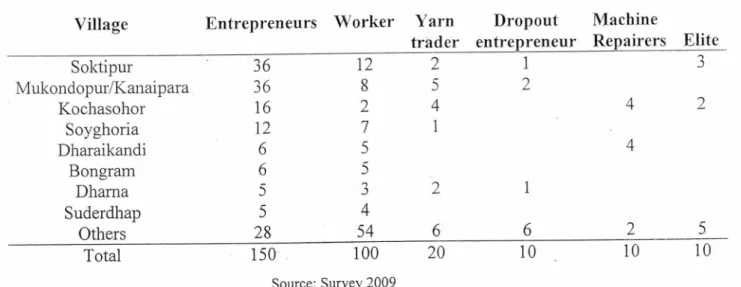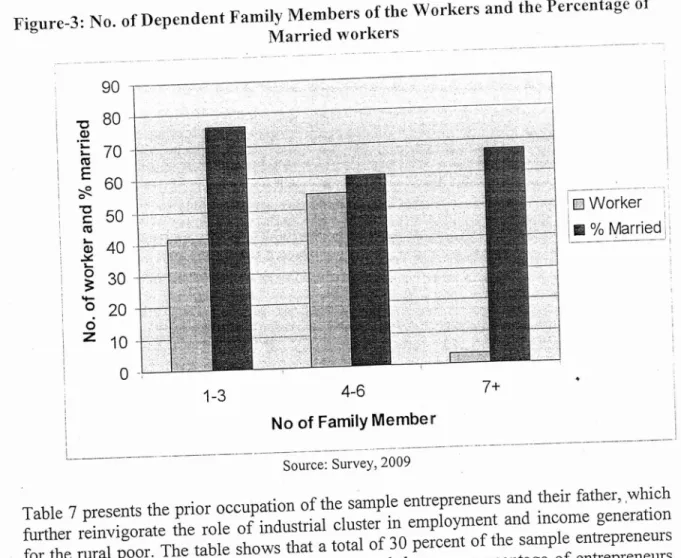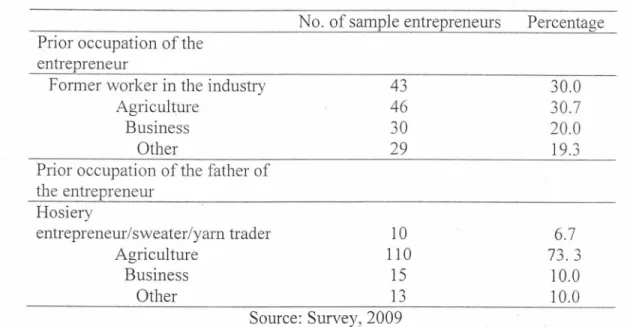It is found that rural transport networks, especially the role of connecting roads and the initiation of a specialized market in Nayarhat, Kochasohor played important roles in the development of the knitwear cluster in Kochasohor. Figure 7: Statement on the factors that contributed to the development of the knitting cluster in Kochasohor. It is found that about 30 percent to 40 percent of the income of the rural population in developing countries comes from non-agricultural economic activities (Haggblade, Hazell and Reardon, 2002).
These rural industrial clusters are the main providers of employment opportunities for the rural poor and these clusters have existed in the country's economy for centuries. Who are the entrepreneurs and who are the workers in the cluster and finally, what are the problems and perspectives of the countryside. This research report seeks to explain the pattern of hosiery cluster development in Gobindaganj upazila, Gaibandha district, Bangladesh.
Until recently, the cluster was expanding tremendously in terms of the number of entrepreneurs and employees. Description of the study area, data and sampling, and research methodology are included in the third chapter.

Chapter II
Literature Review and the Conceptual Framework
Formation and the Role of Industrial Cluster
Thus, industry-specific skilled workers tend to concentrate in the industrial clusters and form markets for skilled workers. Later, their improved knowledge and technology will spread to other entrepreneurs in the cluster, ultimately contributing to the dynamic development of an industrial cluster. Since technology is very simple and requires small start-up capital to start a business, the number of entrepreneurs on the spot increases very quickly, forming an industrial cluster.
Due to the lack of new knowledge, knowledge spillovers are absent or very low in the group. The number of entrepreneurs increases in groups mainly due to the high prevalence of the unemployment rate in rural areas accompanied by high birth rates and the unavailability of alternative employment opportunities in the industrial sector. Because in the absence of constant guest ovations, the spread of kn owledge will not occur and the group may turn into a stagnant group.
According to the model, in the process of development, a cluster usually faces three distinct stages: the start-up stage, the quantity-expansion stage and the quality-improvement stage. W hen the product and production processes are standardized in the new industry, new entrants join en masse and spontaneously form an industrial cluster.
Study Area, Sampling, Data and Methodology
Study Area
Sampling, Data Collection and Research Methodology
We interviewed local elites, retired entrepreneurs and yarn traders to compare our findings on the role of clusters in income generation and to identify the determinants contributing to the development of the hosiery cluster in Kochasohor. We simply asked them what they knew about the development of the hosiery cluster in Gobindaganj and how the cluster contributed to generating income and employment for the local poor. We collected data from the entrepreneurs about their annual profits, total number of employees, machines, annual consumption of yarn, price of yarn and marketing channels in the year and 2009.
We also collected a simple opinion of the entrepreneurs on the issues of further development of the hosiery cluster in Kochasohor. To analyze the determinants of earnings by the workers, we applied multiple regression analysis techniques and correlation matrix. Finally, using MS Excel, we used simple trend analyzes to show the simple relationship between two variables.
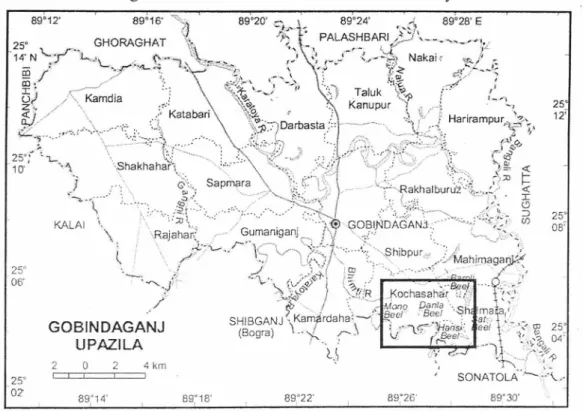
Survey, Data Analyses and Major Findings
Basic Information about the Sample Respondents
Table-3 presents information on the general education in the form of years of schooling of the sample respondents. The last row of the table also shows the average years of schooling of the group of respondents. According to the table, workers have the lowest level of years of schooling, which is 6.5 years on average.
Local elites, which are mainly school teachers and members of the local government; possess the highest level of years of education, which is an average of 13 years. Years of Entrepre Worker Yarn Dropout Machine Local Schooling neur Entrepreneur Merchant Eii'te Repairer. The table, however, shows that more than 55 percent of the sample entrepreneurs have more than nine years of schooling.
It will be interesting to explain how this heterogeneity in the years of education of entrepreneurs affects their innovation effort and performance. But before we go to explain it, the next section explains the role of the group in generating employment and income opportunities for the rural poor.
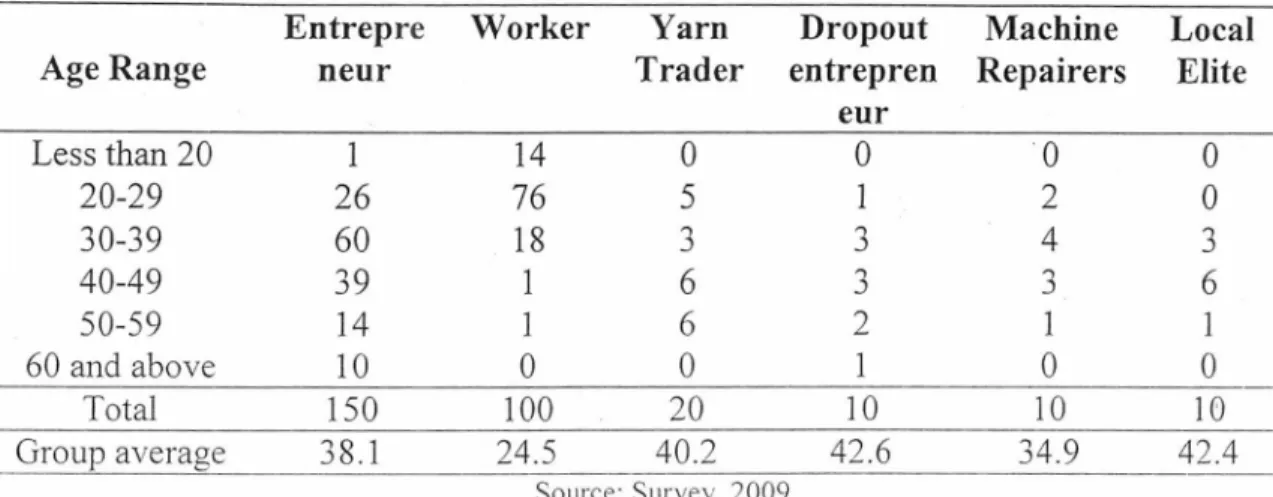
Roles of Hosiery Cluster in Employment and Income Generation for the Poor
The last row of the table shows that almost 90 percent of employees work full-time in the sector. The table thus shows the importance of the cluster in generating employment and income creation for the rural poor. Table 6 further presents the role of the cluster in generating employment by demonstrating the previous occupation of the sample worker.
We did not ask the age of dependent family members of the sampled workers. Table-8 presents the opinion of workers and local elites on the influence of the sock group in Koçasohor. Similar to Figure-4, we have developed Figure-5 to show the relationship between education and income of sample workers.
A simple explanation reveals that one year of schooling will increase a worker's income by Tk. We mentioned that the opportunity to work in the hosiery cluster is seasonal in nature and some workers have taken it as a secondary occupation. The findings are plausible, as almost the entire process of knitting socks is done by hand.
We set the dummy for unemployed workers as the default to examine the role of previous occupation on workers' current earnings. It means that the marital status of the employee has no significant impact on his earnings. In this section, we have demonstrated the role of the hosiery cluster in generating employment and income for the rural poor.
Later we tried to find out the determinants of workers' income. As a result, an employee's education and work experience have less impact on their earnings. In other words, what are the determinants that influence the development of the stocking group in Koçasohor.
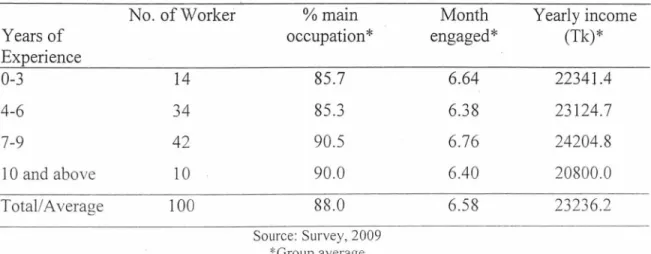
Evolution of the History Cluster and the Factors that Influence the Development of the Cluster in Kochasohor
- The Role of Initiation of a Specialized Market
- The Role of Cluster itself in Expansion of the Hosiery Industry
- Imitation and Qualitative Expansion of the Cluster: The Role of Human Capital of the Entrepreneur
- Estimation Results
- Problems of the Hosiery Cluster: Opinion of the Entrepreneurs We asked the entrepreneurs to mention some of the most important problems they are
Table-IO presents the views of local elites and entrepreneurs on the factors contributing to the development of the hosiery cluster in Kochasohor. Table-IO presents the views of entrepreneurs and local elites on the factors contributing to the development of the hosiery cluster in Kochasohor. Both entrepreneurs and local elites cited the availability of cheap labor in the area as the main factor that contributed to the development of the hosiery cluster in Kochasohor.
Figure 7 only the graphic presentation of local people's opinion about the factors that contributed to the development of the knitting cluster in Kochasohor. However, Table-10 and Figure-7 merely present the opinion of the respondents on the 'factors that contribute to the development of the knitwear cluster in Kochasohor. We have already defined that knowledge spillovers relate to the positive externalities generated by the activities of the other entrepreneurs in the cluster.
In the previous section, we have demonstrated the role of the industrial group in the expansion of industry. In section 4.3 we have portrayed the determinants influencing the development of the stocking group in Kochasohor. We have explained the role of physical infrastructure and the beginning of the specialized market in the development of the hosiery group.
We also highlighted the role of the cluster itself in expanding the industry. The increase in the supply of low-quality sweaters has drastically reduced the company's profitability. The use of high-quality raw materials can be considered one of the important Schumpeterian (1912) innovations in the cluster.
Probably this is the hidden secret in the development of the hosiery cluster in Kochasohor. We have also asked the entrepreneurs to comment on how the existing problem of hosiery cluster in Kochasohor can be eradicated. According to them, the government should solve the electricity problem for the further development of the hosiery cluster in Kochasohor.
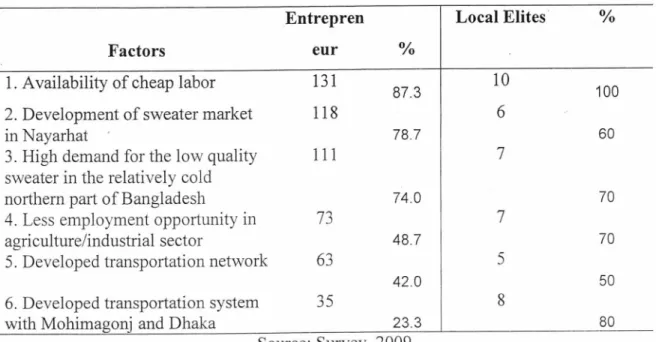
ChapterV
Conclusion and Policy Recommendations
If the pool is not hindered by educated entrepreneurs, the necessary training can be provided to entrepreneurs with special efforts to encourage innovation.
Specific Recommendations
34; Human capital and industrial development: the case of the Bangladeshi knitwear industry." A doctoral dissertation accepted by the National Graduate Institute for Policy Studies (GRIPS), Tokyo Japan in September, 2007. 34; Collective efficacy and collective failure : Sialkot Surgical Instrument Group's Response to Global Quality Pressure". Linkages to the Green Revolution: A Study of Small Scale Industry Related to Agriculture in Punjab, Pakistan.
Strategies for stimulating poverty alleviating growth in the rural non-agricultural economy in developing countries. Using evidence of household income diversification to inform the study of non-farm labor markets in Africa. In Otsuka, K., Sawada, Y., & Estudillo, J.P., eds., Rural Poverty and Income Dynamics in Asia and Africa.
In Haggblade, S., Hazell, P.B.R., & Reardon, T., eds., Reshaping the opportunities and threats of the rural non-agricultural economy in the developing world. Project Title: Determinants of a Successful Rural Industrial Cluster: A Case of Sweater Industry in Gobindaganj Upazila of Gaibandha.
Project title: Determinants of a Successful Rural Industrial Cluster: The Case of the Sweater Industry in Gobindaganj Upazila of Gaibandha
Project title: Determinants of a Successful Rural Industrial Cluster: The Case of the Sweater Industry in Gobindaganj Upazila of Gaibandha
Project title: Determinants of a Successful Rural Industrial Cluster: The Case of the Sweater Industry in Gobindaganj Upazila of Gaibandha
Project title: Determinants of a Successful Rural Industrial Cluster: The Case of the Sweater Industry in Gobindaganj Upazila of Gaibandha
Project Title: Determinants of a Successful Rural Industrial Cluster: A Case of Sweater Industry in Gobindaganj Upazila of Gaibandha A Case of Sweater Industry in Gobindaganj Upazila of Gaibandha District, Bangladesh.
